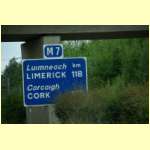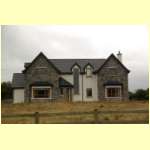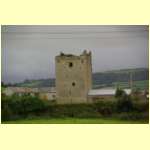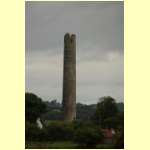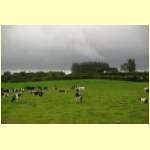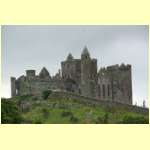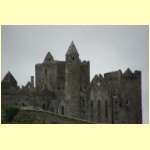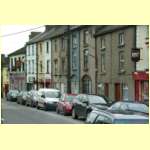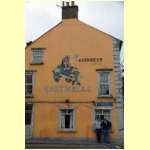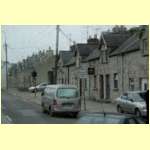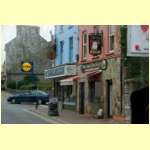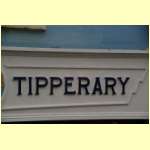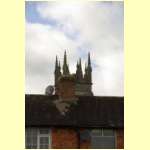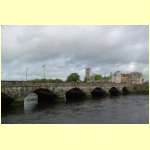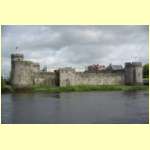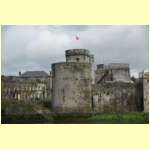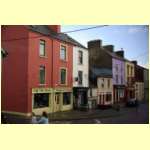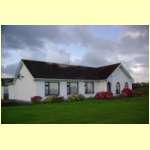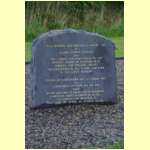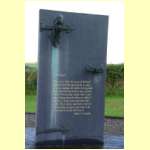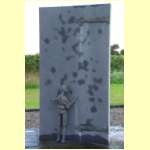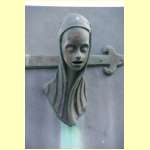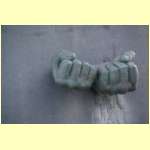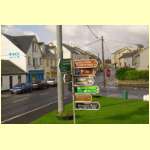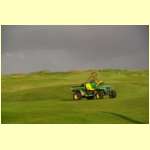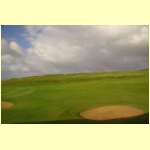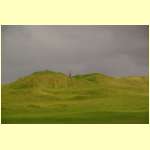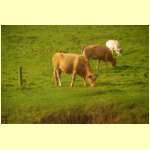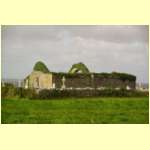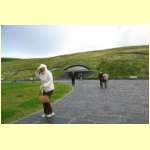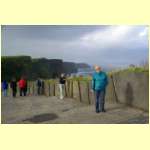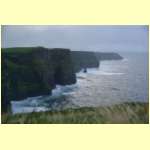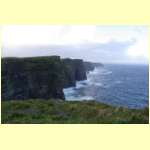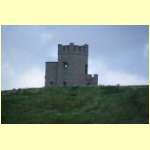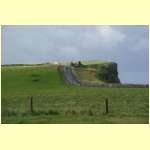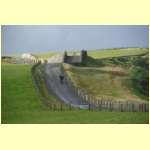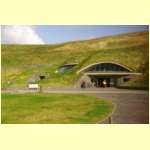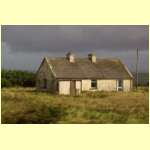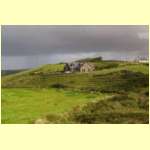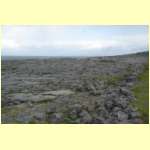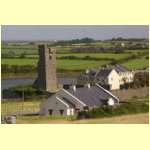Rock of Cashel, Tipperary, Limerick and The Cliffs of Moher, Ireland
Click on thumbnail to view larger picture
On our travel to Limerick we were excited to see The Rock of Cashel where St Patrick preached. It is a cluster of mediaeval buildings
consisting of turrets and towers. We had to stop on the road some distance away to take photos but the view of it on top
of the hill was exquisite. Along the way we saw some old towers, some round and some different shapes. it appears that maybe they
were bell towers to the monasteries and the churches. Some could have been watch towers but what is known is that they were very old, some maybe dating back to the
ninth century.
|
Tipperary was next on our itinery. A smallish town that is famous because of Jack Judge, who in 1914 wrote the song "It's a long
way to Tipperary". This song was adopted by the soldiers in World War 1, as their theme song at Xmas when a 24 hour truce was called. Tipperary was a very green
town, much like the rest of Ireland and it is located on the banks of the River Suir. It was still raining but gave us the impression that Ireland was a pretty
wet country but lucky to have the green landscape that it does because of the rain.
|
Limerick was our next place to stay and we had an orientation drive around before going to our hotel. We saw
St Mary's Cathedral, King John's Castle and the Stone where the treaty of Limerick was signed in 1691. Then after checking out some
of the main streets we booked in and then went off to explore. We crossed the bridge over the River Shannon and walked the town. Limerick is
the third largest city in Ireland and so there were many shops and restaurants here as it is a major place to visit.
|
People in Ireland are reputed to have the highest education success in Great Britain. Some 80% of students leaving
school can speak 3 languages, play an instrument and 88% own their own homes. As a general rule Irish people are known to be tall and slim.
Prior to 1970 Catholics couldn't own their own land and it seemed Protestants were the richer group of people. The thing they grow most here
is grass and they have more livestock (sheep, cows and horses) than crops. Popular sports are Hurling and Gaelic Football. Everything to do with
transport for example cars, buses and trucks are imported. The history of The Potato Famine came into mind as we stopped to look at a memorial on the side of the road.
Between 1845 and 1852 the crops failed due to a rogue virus imported from America and some one million people died and another million emigrated from Ireland. Population at this time dropped
by 25% and still the ones that were left suffered starvation and hardship so much so that images like this memorial reminded us of stark times. The story of this little one tells of
his despair after his parents died and he had no where to go.
|
Today we were looking forward to a West Coast Excursion. We didn't have to pack today so that is a bonus as it gives us more time to explore Ireland. On
the way to The Cliffs of Moher we saw lots more golf courses and wondered how they play on some of the windy coastal areas.
|
Some hour and a half after leaving Limerick we arrived at the very windy Cliffs of Moher. Even though it was blowing a gale and hard to walk or climb up
the steps to the top, it was worth every step of the way. The 68ft cliffs were awesome, the wind whipping up the sea and giving the cliffs an eerie look. The spray was
reaching right up to us and it was quite hard to stand still and admire this magnificent view. From here we were able to see
the Clare Coast and one could imagine on a clear day how magnificent that would be. After some time here we left to drive across the limestone plateau on our way to Galway.
| 